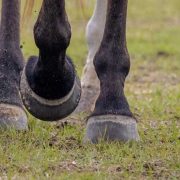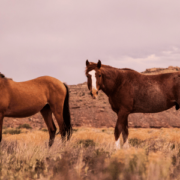FARM, HOME & GARDEN: SPECIAL OFFERS FROM THE WINTER CATALOGUE
Here are our leading offers for Farm, Home& Garden produces from the Winter catalogue. Prices may vary due to freight. Used for…
Free Delivery when you spend $49 or more. (Weight Limits Apply – view more)
 Dog
Dog

Shop Tuckers great range of dog food, health care & wellness products today. Delivered or Click & Collect.
 Cat
Cat

Tuckers has a great range of cat food, health care & litter products for your beloved cat. Shop now.
 Horse
Horse

Tuckers carry a huge range of food, supplements, health care, hoof care and grooming accessories. Shop now.
 How To Keep Your Horse In Top Shape With Kelato Swelldown
How To Keep Your Horse In Top Shape With Kelato Swelldown Get your Free Balanced TruGuide Diet
Get your Free Balanced TruGuide Diet WET FEET: NUTRITIONAL MANAGEMENT OF HORSES IN WATER-LOGGED AREAS
WET FEET: NUTRITIONAL MANAGEMENT OF HORSES IN WATER-LOGGED AREAS GastroAID Everyday: The unique gut health supplement with science-backed ingredients
GastroAID Everyday: The unique gut health supplement with science-backed ingredients EQUINE HEALTH: SPECIAL OFFERS FROM THE WINTER CATALOGUE
EQUINE HEALTH: SPECIAL OFFERS FROM THE WINTER CATALOGUE Chook/Bird
Chook/Bird

Tuckers range of food, accessories & health care products will keep your chooks & birds happy and healthy.
 Small Animal
Small Animal

Shop food and health care products for your little mates @ Tuckers. Delivered or Click & Collect.
 Farm/Garden
Farm/Garden

Tuckers carry a wide range of sheep & cattle products, plus everything you’ll need around the farm or garden.
 Dog
Dog

Shop Tuckers great range of dog food, health care & wellness products today. Delivered or Click & Collect.
 Cat
Cat

Tuckers has a great range of cat food, health care & litter products for your beloved cat. Shop now.
 Horse
Horse

Tuckers carry a huge range of food, supplements, health care, hoof care and grooming accessories. Shop now.
 How To Keep Your Horse In Top Shape With Kelato Swelldown
How To Keep Your Horse In Top Shape With Kelato Swelldown Get your Free Balanced TruGuide Diet
Get your Free Balanced TruGuide Diet WET FEET: NUTRITIONAL MANAGEMENT OF HORSES IN WATER-LOGGED AREAS
WET FEET: NUTRITIONAL MANAGEMENT OF HORSES IN WATER-LOGGED AREAS GastroAID Everyday: The unique gut health supplement with science-backed ingredients
GastroAID Everyday: The unique gut health supplement with science-backed ingredients EQUINE HEALTH: SPECIAL OFFERS FROM THE WINTER CATALOGUE
EQUINE HEALTH: SPECIAL OFFERS FROM THE WINTER CATALOGUE Chook/Bird
Chook/Bird

Tuckers range of food, accessories & health care products will keep your chooks & birds happy and healthy.
 Small Animal
Small Animal

Shop food and health care products for your little mates @ Tuckers. Delivered or Click & Collect.
 Farm/Garden
Farm/Garden

Tuckers carry a wide range of sheep & cattle products, plus everything you’ll need around the farm or garden.
Home / Articles / Farm/Garden / THE BUTTERFLY EFFECT: HOW A WARM SPRING ACCELERATES FLY POPULATION GROWTH

As winter fades and the country awakens from its slumber, the arrival of spring brings with it a symphony of life and renewal. And this spring is forecast to be one of the warmest we have seen in a long while! Among the myriad of creatures that take advantage of the changing seasons, flies stand out as some of the most prolific and adaptable insects. A warm spring can serve as a catalyst for their rapid population growth, leading to a significant increase in their numbers. In this blog, we delve into the fascinating world of flies and explore how a warm spring can set the stage for their explosive population expansion.
Before we dive into the correlation between warm springs and fly population growth, let’s briefly understand the lifecycle of these insects. Flies undergo a metamorphic process called “complete metamorphosis,” which consists of four distinct stages: egg, larva (maggot), pupa, and adult. Flies lay their eggs on organic matter such as decaying plants, food waste, or animal remains. The warm and moist conditions of spring are particularly conducive to the hatching of fly eggs. The larvae feed on moist, bacteria-rich substrates and then transform during the puparial stage into adult flies.
Temperature plays a pivotal role in the growth and development of flies. A warmer environment accelerates their metabolic rate, causing them to progress through their lifecycle stages at a faster pace.
This means that you will soon notice more flies hanging around potential food sources like your bins and outdoor animal waste (domestic pets and chickens) and interfering with your outdoor, and indoor, spring activities.

Female flies quickly become active in warmer weather. Warmer temperatures stimulate their reproductive systems, leading to an increase in egg-laying activity. Houseflies, bush flies, and blowflies find ample breeding grounds in the form of moist, decaying organic and waste materials, and the warmer conditions of spring enhance their ability to reproduce quickly.
Warmer temperatures not only accelerate the development of individual flies but also shorten the time between generations. With each generation, the population multiplies exponentially. As a result, a warm spring allows for the emergence of multiple generations of flies within a relatively short span of time. This rapid succession of generations can lead to a surge in fly numbers that can sometimes become challenging to manage.
While warmth is a key factor in fly population growth, other environmental conditions also play a role. Adequate moisture levels, availability of suitable breeding sites, and the presence of organic matter all contribute to the thriving fly populations. A warm spring, coupled with these favourable conditions, creates the perfect storm for an explosive increase in the fly population.
Dealing with a rapid fly population growth can be a challenge, as flies can carry diseases, contaminate food, and play havoc with our outdoor activities. To manage fly populations, sanitation practices play a critical role. Proper waste disposal, management of decaying matter (e.g. composting), and reducing breeding sites can help curb fly numbers. Additionally, traps can be employed as part of your integrated pest management strategy. We recommend EnviroSafe fly traps in the handy Standard size (750ml) for suburban back yards, and the Jumbo size (2.5L) for those living in rural areas. They are simple to use and super effective at removing excess flies during spring.
Entire range - quick and secure delivery
Buy securely online and pickup at your local store
Call your local store and come on down to pickup
© 2024 Tuckers Pet & Produce.
